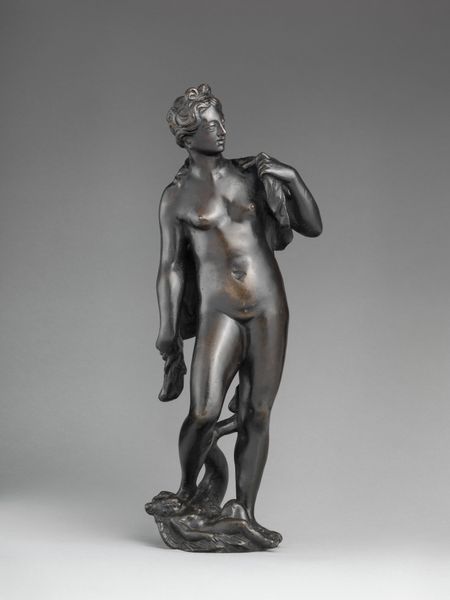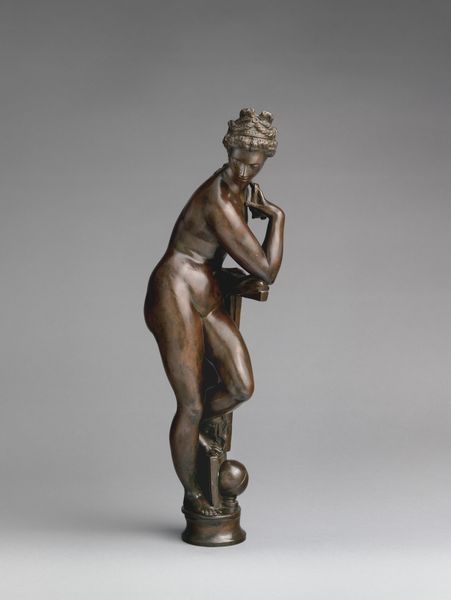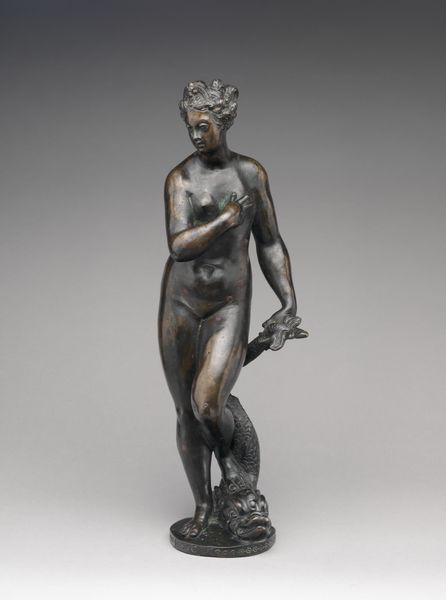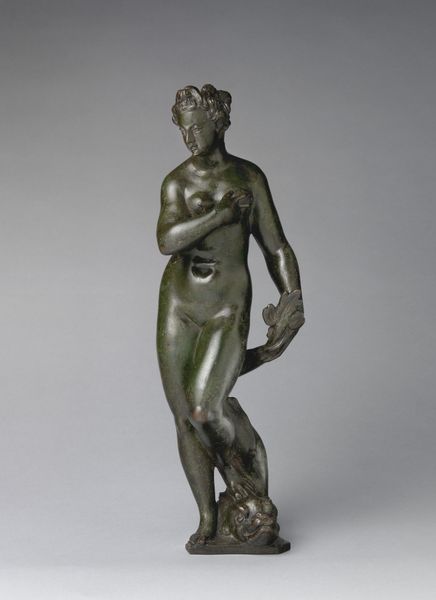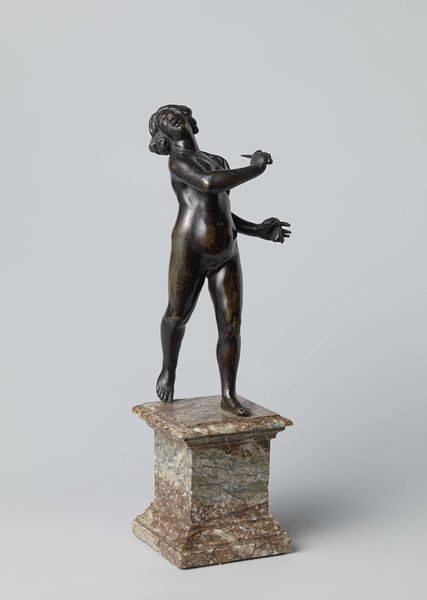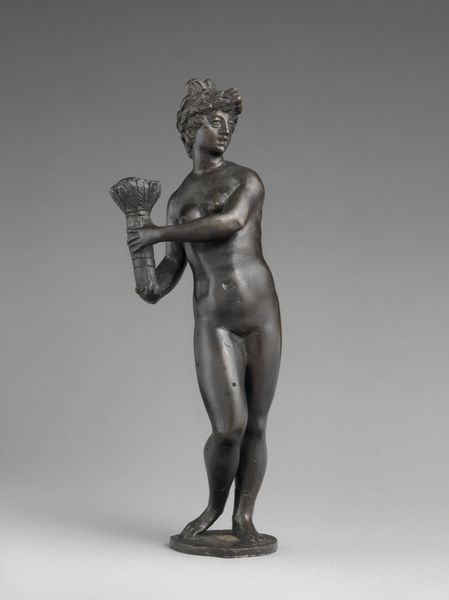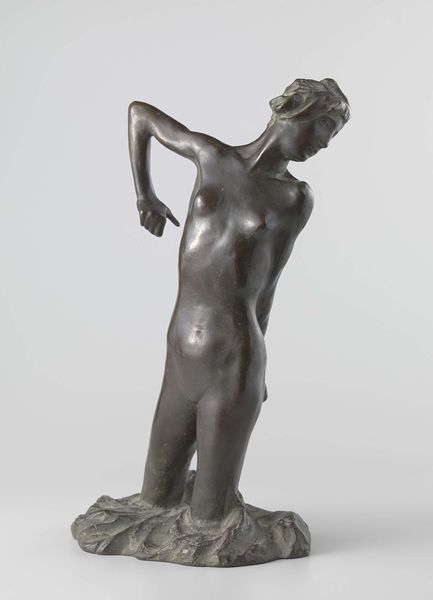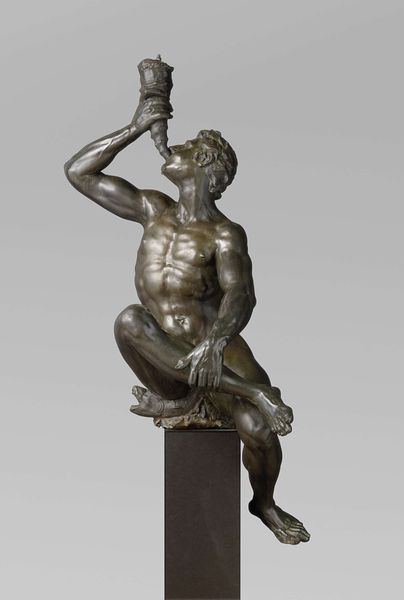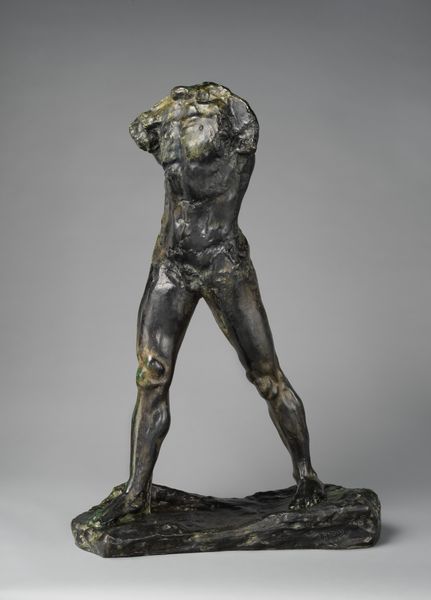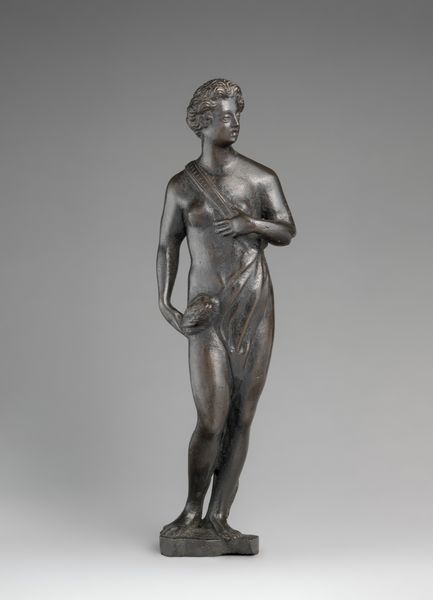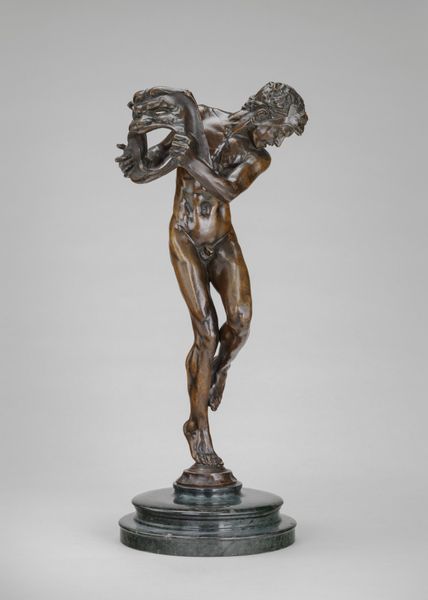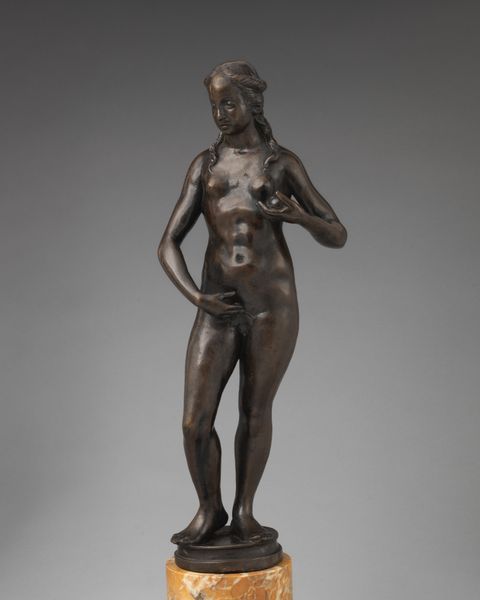
Dimensions: Overall (confirmed): 11 1/8 × 5 × 3 3/8 in., 10 lb. (28.3 × 12.7 × 8.6 cm, 4.5 kg)
Copyright: Public Domain
Benvenuto Cellini cast this bronze sculpture of Ganymede with eagle and eaglet during the Renaissance, a period of intense re-engagement with classical antiquity. Here, we see Ganymede, a Trojan youth, abducted by Zeus in the form of an eagle. The eagle is a powerful symbol, frequently associated with royalty, strength, and divine power. It appears in various cultures, from the Roman Empire to the Americas, often signifying imperial authority or spiritual transcendence. In Cellini's depiction, the eagle clutches Ganymede, embodying both the god’s power and the psychological undercurrents of desire and transformation. The motif of abduction itself carries a complex emotional charge, echoing through centuries of art. We see it, for example, in countless renditions of Leda and the Swan, mirroring a primal narrative of divine intervention and human vulnerability. These images tap into a collective memory, engaging viewers on a deep, subconscious level with themes of power, submission, and metamorphosis. The cyclical recurrence and evolution of this symbol underscore its enduring resonance, constantly reshaped by the currents of history and the human psyche.
Comments
No comments
Be the first to comment and join the conversation on the ultimate creative platform.

